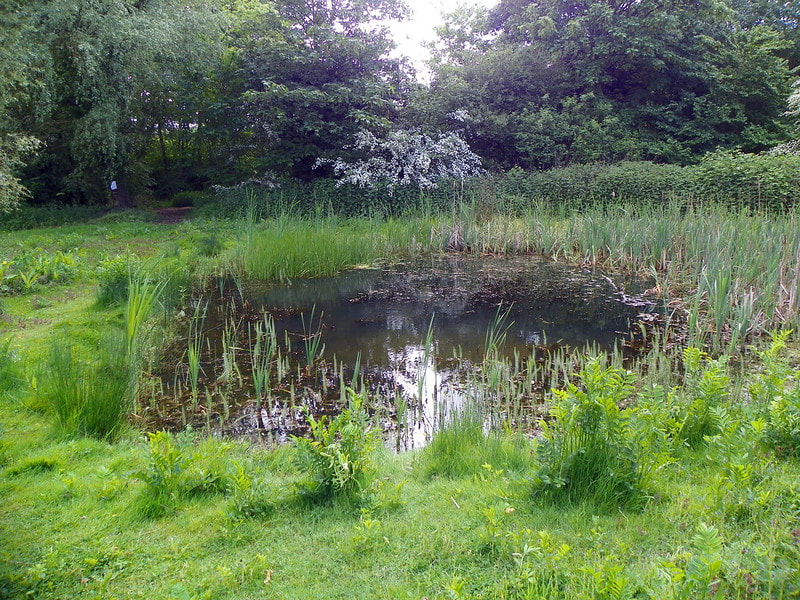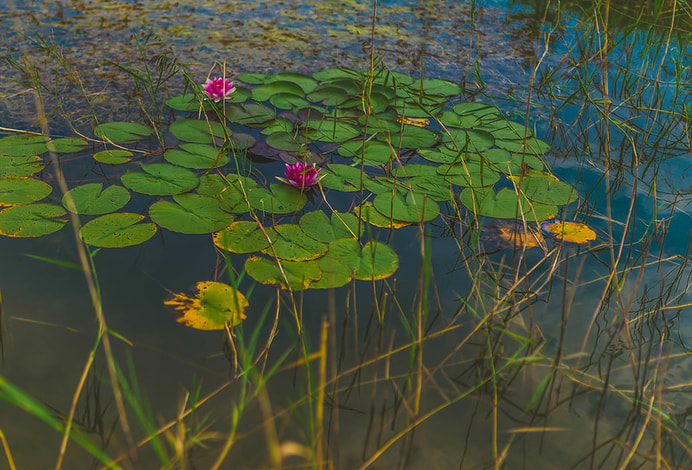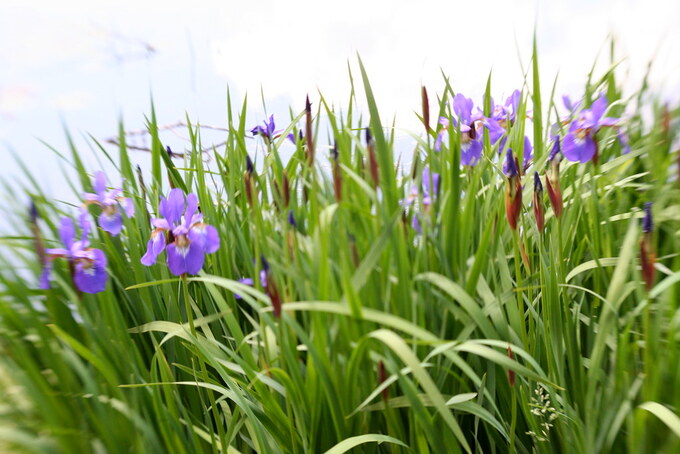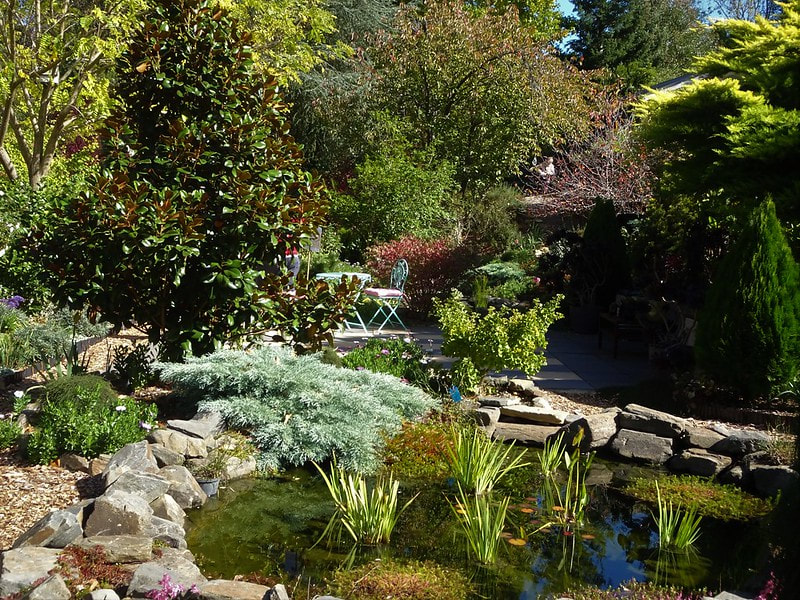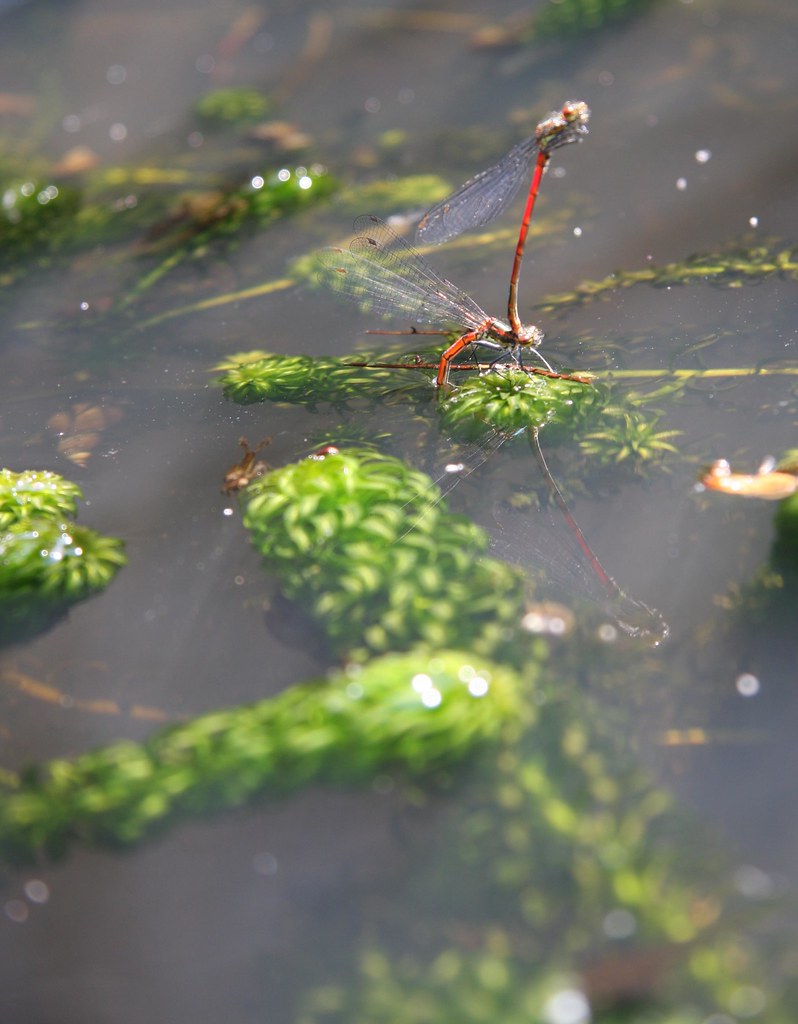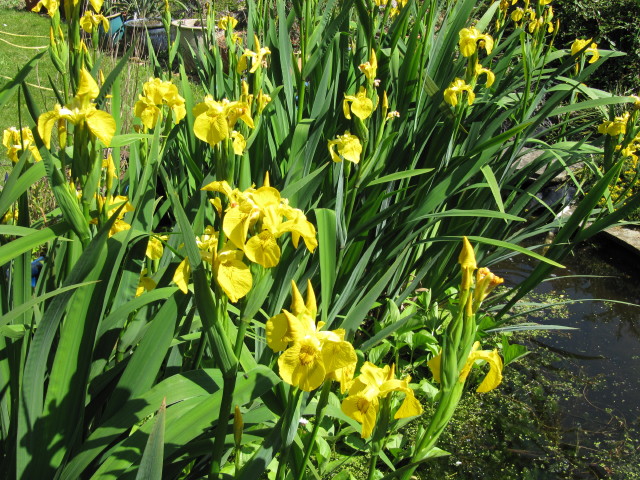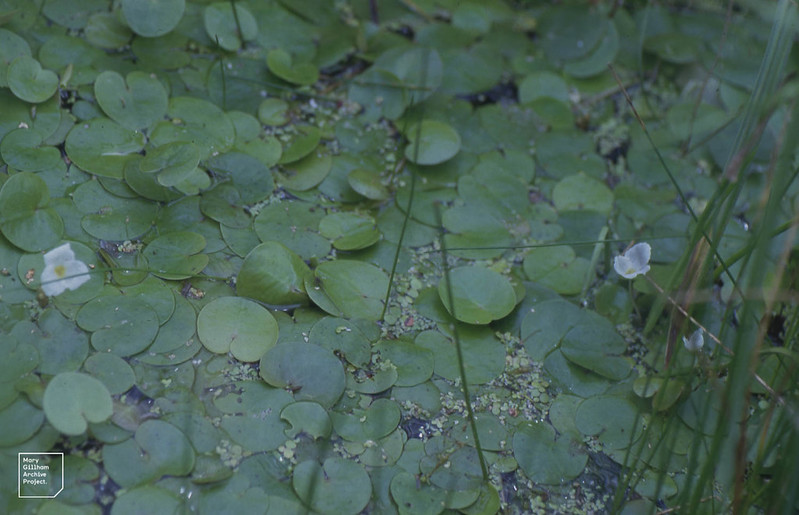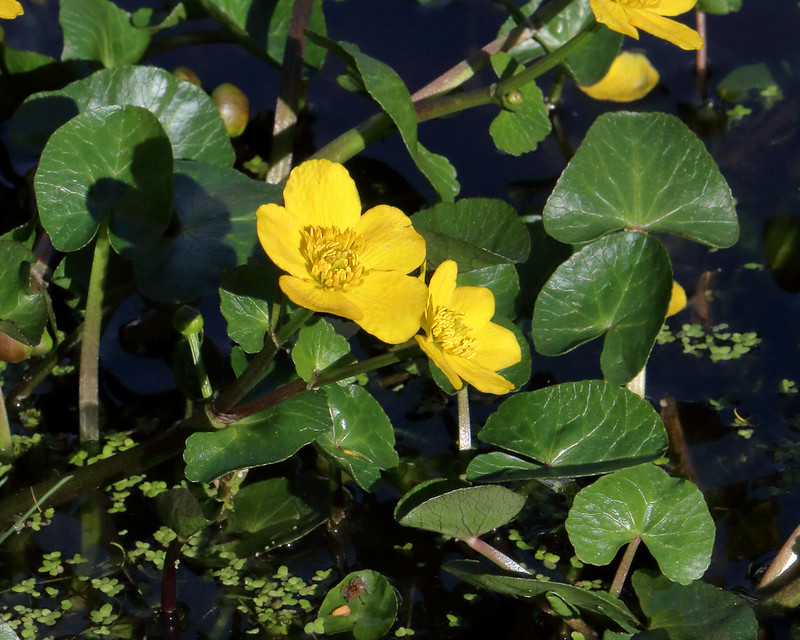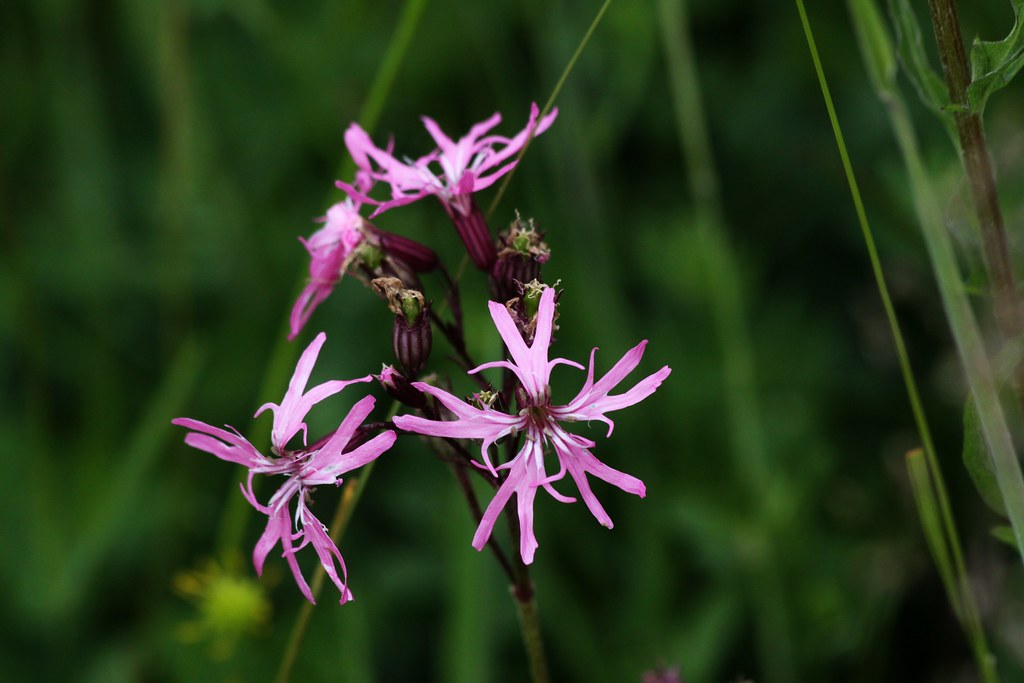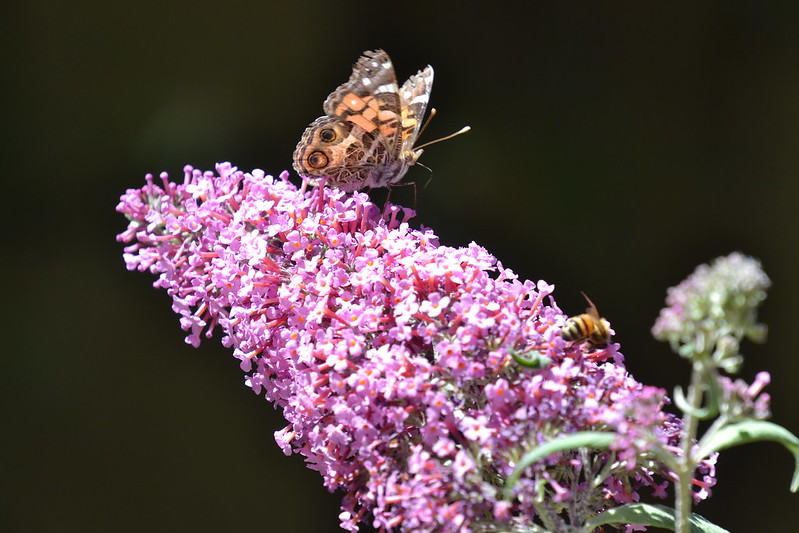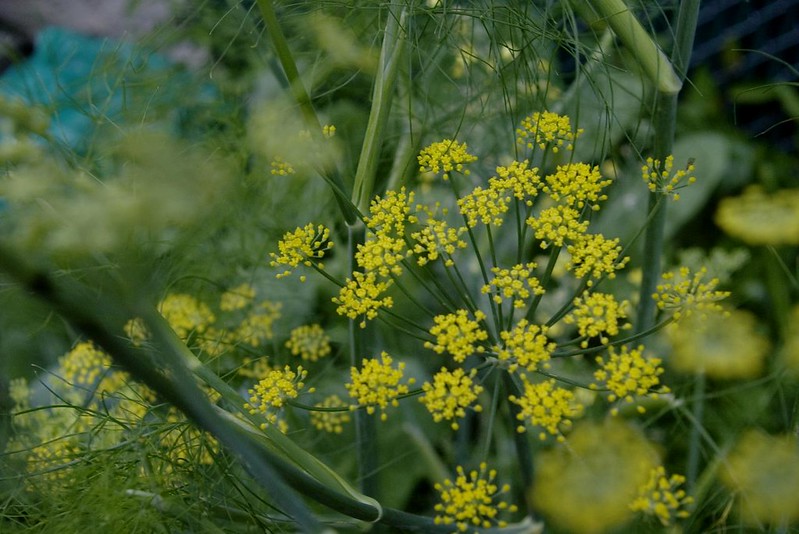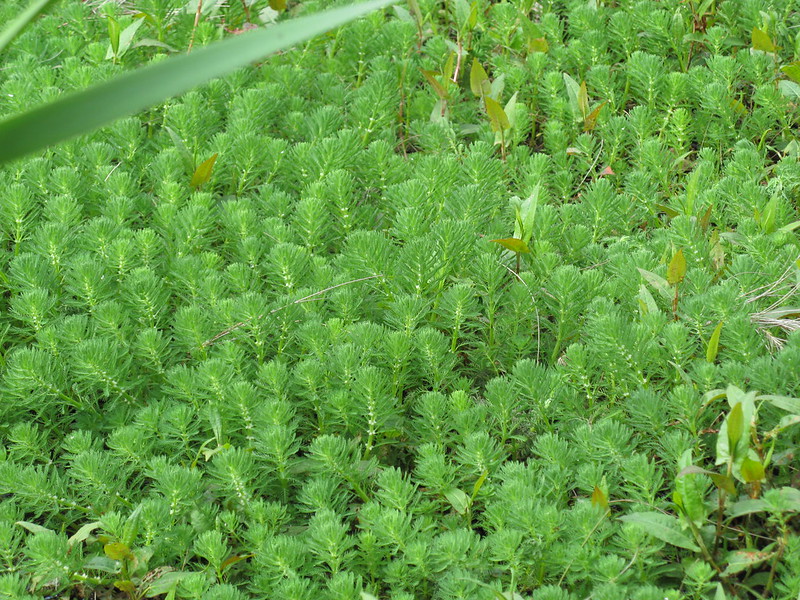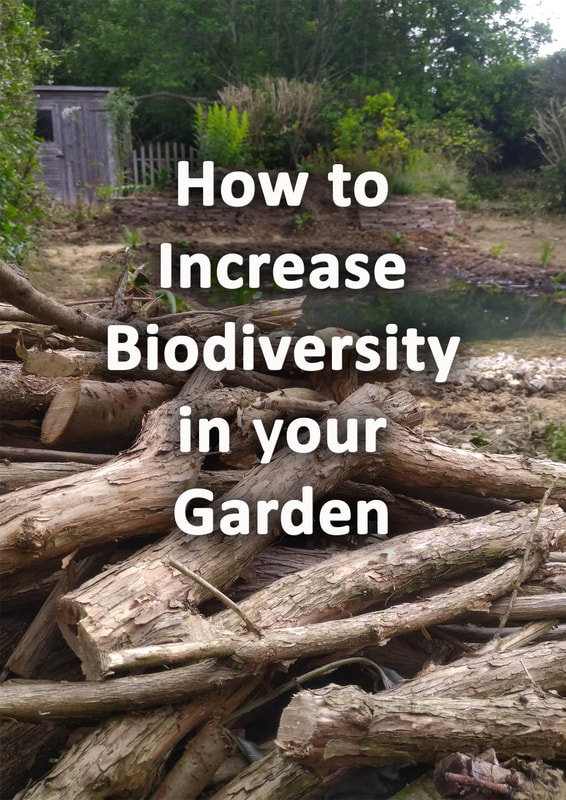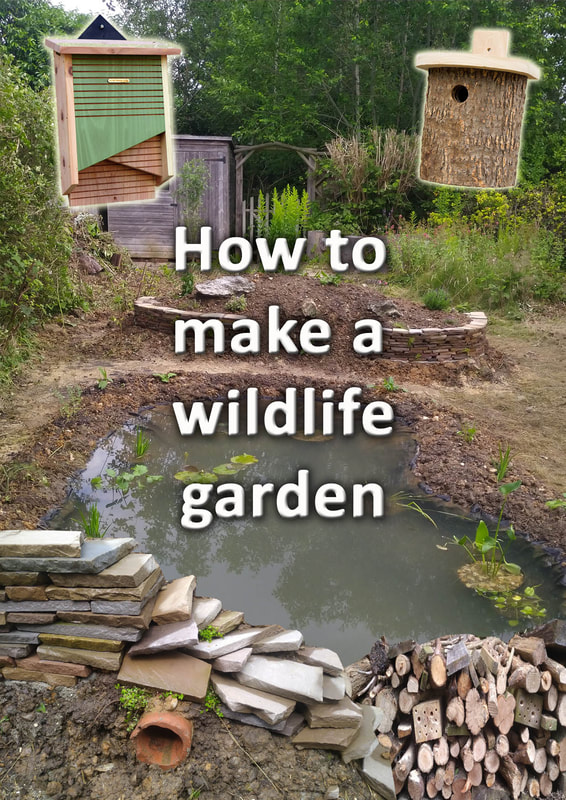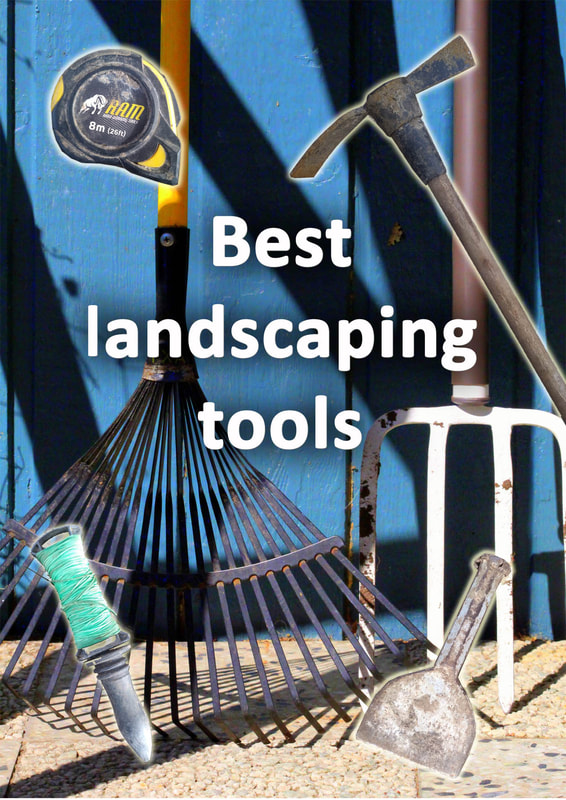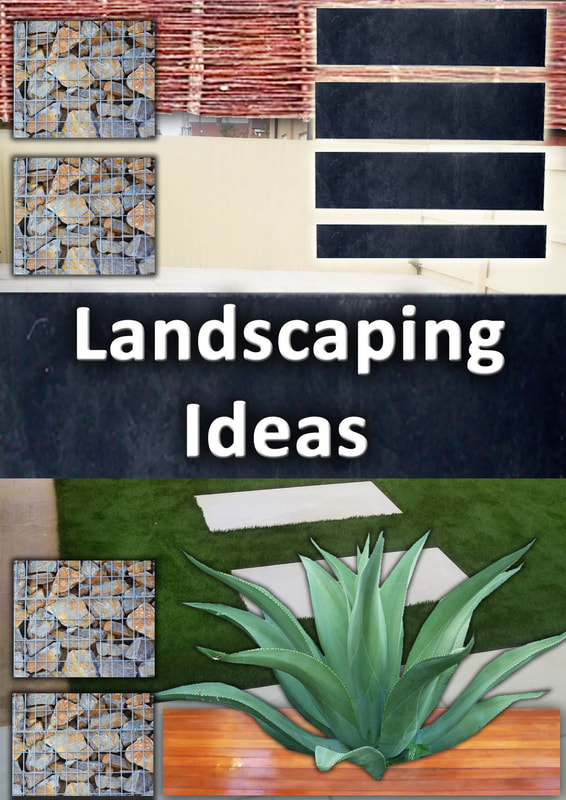|
This article contains affiliate links
Best plants for a wildlife pond
Wildlife ponds are a fantastic way to encourage wildlife to a specific location. Wildlife large and small relies on ponds for drinking, feeding, shelter and completing their lifecycles.
Choosing the best plants for a wildlife pond will attract new wildlife quickly providing essential food and shelter. The best plants for a wildlife pond will depend on its location, design, size and local climate. Perfect plants for wildlife ponds should be diverse in the ecological sub niches wildlife ponds provide. These are usually defined by the three dimensional void of the pond. These wildlife pond plant niches are typically oxygenators, emergent’s, floating, marginal and bog species. A good combination of these planting types with correct species selection will result in the best plants for your wildlife pond. Native plants for a wildlife pond
When planning a wildlife pond try to research what freshwater wetland plants are native to your area. Interrelationships of ecological communities can take many thousands of years to evolve. For this reason it is wise to try and adhere to the naturally occurring wildlife species in your area.
Local and native plants can adapt to local conditions rarely needing any extra plant care. There are many published ecological surveys and publications which will describe which species are native to your area. Many specialist pond retailers now have a good knowledge of what wildlife pond plants are native to their location. Ecological plants for a wildlife pond
Wildlife pond plants do not have to be native. Even though native plants are usually the best to attract wild species some non natives are also good for wildlife. Try to make sure no non native pond plants are invasive and are always bought from a reputable supplier. A good example of ecological versions of native pond plants is waterlillies.
Many European wild species have very small flowers and can become large making them less ideal for garden ponds. Many Asian species are smaller with larger flowers and still can provide benefits to wildlife even though they are not native. There are many naturalised plant species that have many wildlife benefits. Try to find out what plants are optimal for a wildlife pond in your specific country or region. Wildlife pond design
When seeking the best plants for a wildlife pond it is good to have a pond which has been designed to facilitate the main ecological aquatic niches. A good wildlife pond will have a variation of depths and shelves to accommodate the needs of the aquatic plants. The pond should have a deep centre and very sloping sides to at least one edge.
This not only allows creatures to access the water with ease but also allows warm shallow areas for aquatic insects to lay their eggs. A wildlife pond with a diverse structure of shelves and slopes will be optimum for the best plants to grow and thrive. Why not watch a video of a wildlife pond we built below showing a good wildlife pond example. For more information on wildlife garden design go to Ecospaces Limiteds Website: http://www.eco-spaces.co.uk/ Soil substrates
Pond plants can be extremely aggressive in their growing habit. For this reason it is usually advised to plant your pond plants in aquatic pots. These allow the roots to run but prevent the plant from spreading too far from its original planning position. Regardless if you are planting in pots or directly into the bottom of the pond it is important to use the correct substrate.
Never put garden topsoil or anything nutrient rich into your pond. This will encourage algae to bloom starving the water of oxygen and turning it a dark shade of green. Use substrates such as play sand, fine gravels or aquatic compost from an aquatic supplier. Oxygenating plants
Oxygenating plants grow within the main body of water and usually are rooted in the ponds substrate. They capture sunlight through the water and through photosynthesis produce tiny bubbles. These subsequently oxygenate the water making it more habitable for insects and amphibians.
This oxygenating process also helps clean the water preventing algae blooms and stagnation. Oxygenators are usually long and feathery providing great places for aquatic creatures to lay their eggs. When planting these to ensure the base of the plants are tied to a heavy stone. This will ensure they easily root in the substrate at the base of the pond. Some of the best Oxygenating plants for a wildlife pond are: Curled pondweed (Potamogeton crispus) Rigid hornwort (Ceratophyllum demersum) Spiked water milfoil (Myriophyllum spicatum) Water crowfoot (Ranunculus aquatilis) Emergent plants
Emergent plants are usually rooted in the shallow regions of the pond and emerge through the water. These provide an important and functional wildlife habitat. Larvae of flying insects crawl up onto the stems to transform into their new form.
Spiders spin webs above the ponds surface to capture flying insects. Emergent plants provide a transitional zone between the water’s surface and dry land. These transitional zones or ecotones are very important for all sorts of wildlife. Below are some of the best emergent plants for a wildlife pond: Small sweet grass (Glyceria fluitans) Branched bur-reed (Sparganium erectum) Yellow flag Iris (Iris pseudocorus) Bogbean (Menyanthes trifoliata) Greater spearwort (Ranunculus lingua) Greater pond sedge (Carex riparia) Floating plants
Floating plants can either be plants which independently float on the surface or whose leaves that float on the surface. Water lilies for example are rooted in the bottom but leaves create a floating canopy.
Floating plants provide shady areas in oven water and can provide egg laying opportunities for wildlife. Floating plants are also commonly fed upon by many aquatic species. Some of the best floating plants for a wildlife pond are: Frogbit (Hydrocharis morsus-ranae) Amphibious bistort (Polyginum amphibium) Yellow Water Lilly (Nuphar lutea) Broad-leaved pondweed (Potamogeton natans) Marginal plants
Marginal plants live around the margins of wildlife ponds. Some live continuously under shallow water and some can take periods of drying out.
Marginal plants consist of aquatic herbs, grasses and herbaceous, perennials. Marginal plants can provide optimal food and shelter for a wildlife pond. Some of the best marginal plants for a wildlife pond are: Lesser spearwort (Ranunculus flammula) Water speedwell (Veronica anagallis-aquatica) Water forget-me-not (Myositis scorpioides) Watercress (Nasturtium officinale) Water mint (Mentha aquatica) Marsh marigold (Caltha palustris) Bog plants
Bog plants or marsh plants grow in the moist ground around a pond. These can vary in size and shape and provide a great habitat for many species of wildlife. Densely growing boggy areas around a pond provides security and cover for wildlife living near the pond or coming to drink. Some of the best bog plants for a wildlife pond are:
Pendulous sedge (Carex pendula) Marsh woundwort (Stachys palustris) Purple loosestrife (Lythrum salicaria) Ragged robin (Lychnis flos-cuculi) Pendulous sedge (Carex pendula) Marsh woundwort (Stachys palustris) Cuckooflower (Cardamine pratensis) Adjacent flower borders
As important as wetland plants are plants in the surrounding areas and flower beds are also very important to the success of a wildlife pond.
Adjacent flower borders can provide nooks and crannies as well as rock piles and rotting logs. These can provide nesting opportunities for small mammals and places to hide for invertebrates. There are many other conventional garden plants which can attract wildlife for a number of reasons. Some provide nuts and berries, some provide nectar and some have dense foliage so wildlife can hide. Below are some of the best plants for adjacent flower borders to a wildlife garden: Butterfly bush (Buddleja davidii) Holly (Ilex aquifolium) Honeysuckle (Lonicera periclymenum) Comfrey (Symphytum × uplandicum) Elder (Sambucus nigra) Cotoneaster (cotoneaster c. Horizontalis) Herbs good for wildlife ponds
Usually thought of as plants to add to cooking, herbs have extremely high value to wildlife. Usually preferring dryer conditions herbs can be planted in containers, raised beds or mounded ground next to wildlife ponds.
Many herbs have aromas and flower blooms extremely attractive to beneficial insects to the garden. As well as providing culinary delights for us they can act as a habitat booster to your wildlife garden. Here are the best herbs for nearby a wildlife pond: Fennel (Foeniculum vulgare) Mint (Mentha spicata) Lavender (Lavandula angustifolia) Thyme (Thymus vulgaris) Borage (Borago officinalis) Oregano (Origanum vulgare) Plants to avoid in your pond
There are many plants that may not be suitable for your wildlife pond. First of all it is important to recognise aquatic plants can be very vigorous. If you have a very small wildlife pond it may be good to research each species specifically on how aggressive they are. Even though a plant may be native to your area it may not be suitable for a smaller pond.
There are many plants that were commonly sold for ponds but have now become a nuisance in the countryside. Some of these have outcompeted native species and have subsequently been banned from being sold. Some native pond plants have been sourced from other countries meaning they may vary from local stock. This can have an impact on if they are suitable for your local wildlife. Always ask advice from a local native wetland plant specialist for the best information. Some of the typical plants to avoid in your wildlife pond are: Floating water primrose (Ludwigia grandiflora) Floating pennywort (Hydrocotyle ranunculoides) Parrots feather (Myriophyllum aquaticum) Australian swamp stone-crop (Crassula helmsii) Water fern (Azolla filiculoides) Curly waterweed (Lagarosiphon major) Canadian pondweed (Elodea canadensis) Nuttall's pondweed (Elodea nuttallii) Water hyacinth (Eichhornia crassipes) Water lettuce (Pistia stratiotes) Maintenance
Many believe the best course of action for wildlife is to leave it to its all devices. However when it comes to garden wildlife ponds some light management is needed. Pond plants can be extremely vigorous and some can become out of control very quickly.
When your wildlife pond is first created go through a monitoring period to make sure no plants get out of control. This is especially important as other plants are establishing. Try to trim out access growth every other to make sure it does not become choked with foliage. Any removed vegetation should be left by the ponds side to allow trapped creatures to escape back into the water. For some informative further reading we have linkedthe wildlife pond book below.
Planning on building and planting your very own wildlife pond? Why not check out our resources page or our recommended landscaping tools page.
Thank you for reading our article on the best plants for wildlife ponds! If this article helped with your search why not share it with your friends?
If you require a landscape gardener or landscaping work completed and live within Buckinghamshire or the Chilterns feel free to contact us via our contact page.
Our services include patios, paving, driveways, garden make overs, clearances, fencing, turfing, garden design, and general landscaping work. We typically service the towns of Great Missenden, Aylesbury, Amersham, High Wycombe,, Princes Risborough, Berkhamsted and Beaconsfield.
0 Comments
Leave a Reply. |
The Author
|
Landscaping services across Buckinghamshire, Amersham, Aylesbury & High Wycombe
Hyde Heath, Amersham, Buckinghamshire |
|

